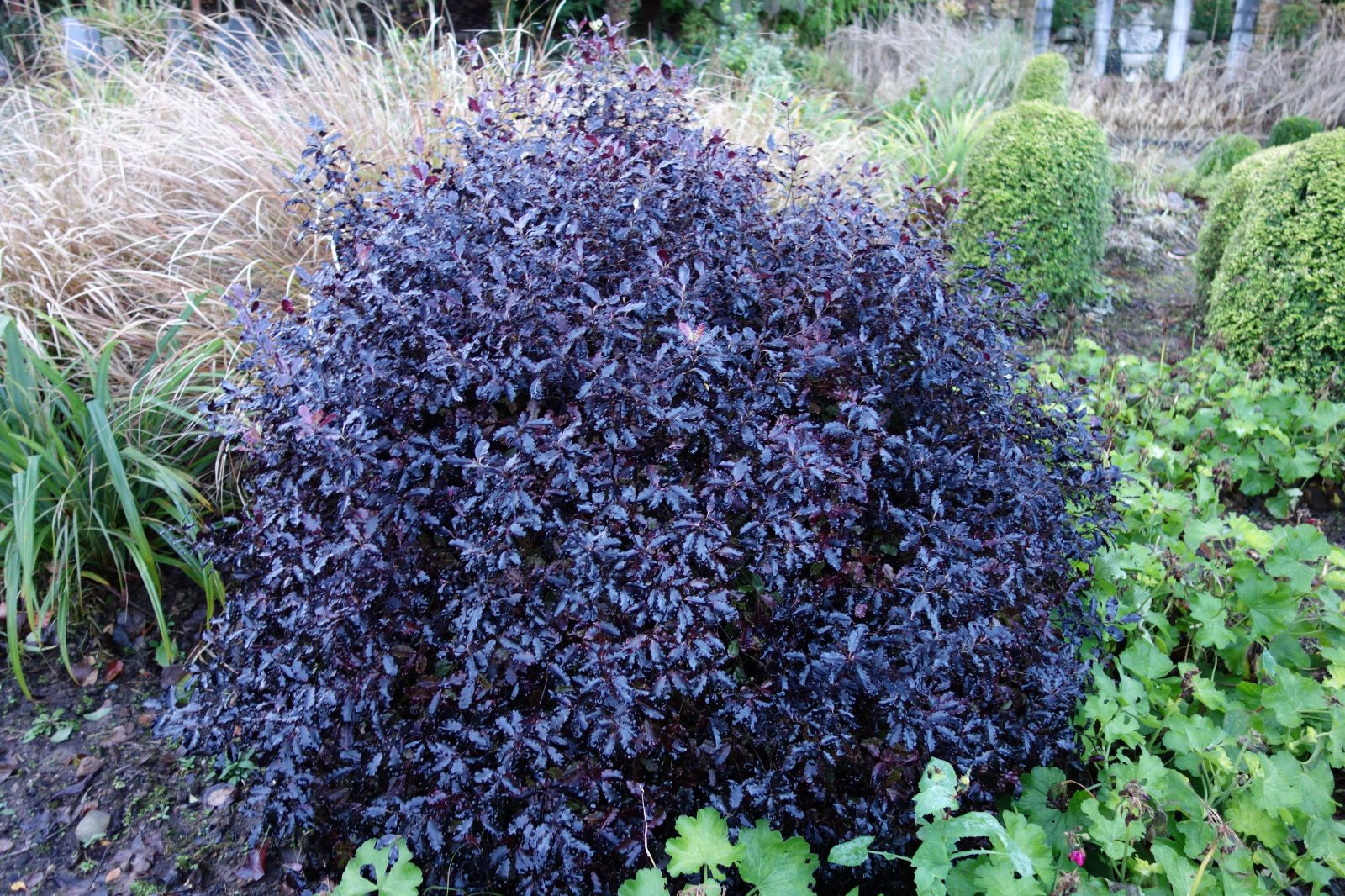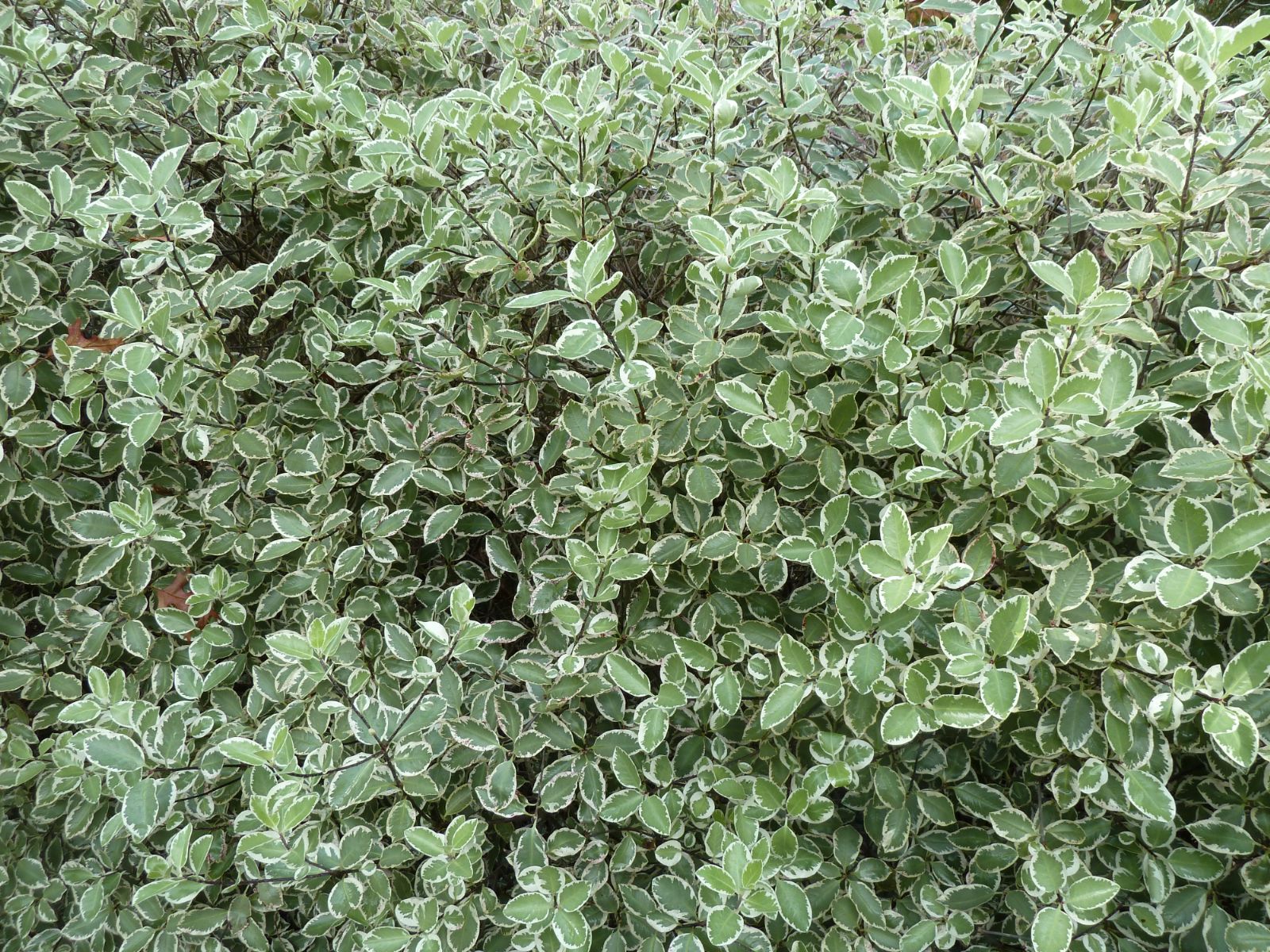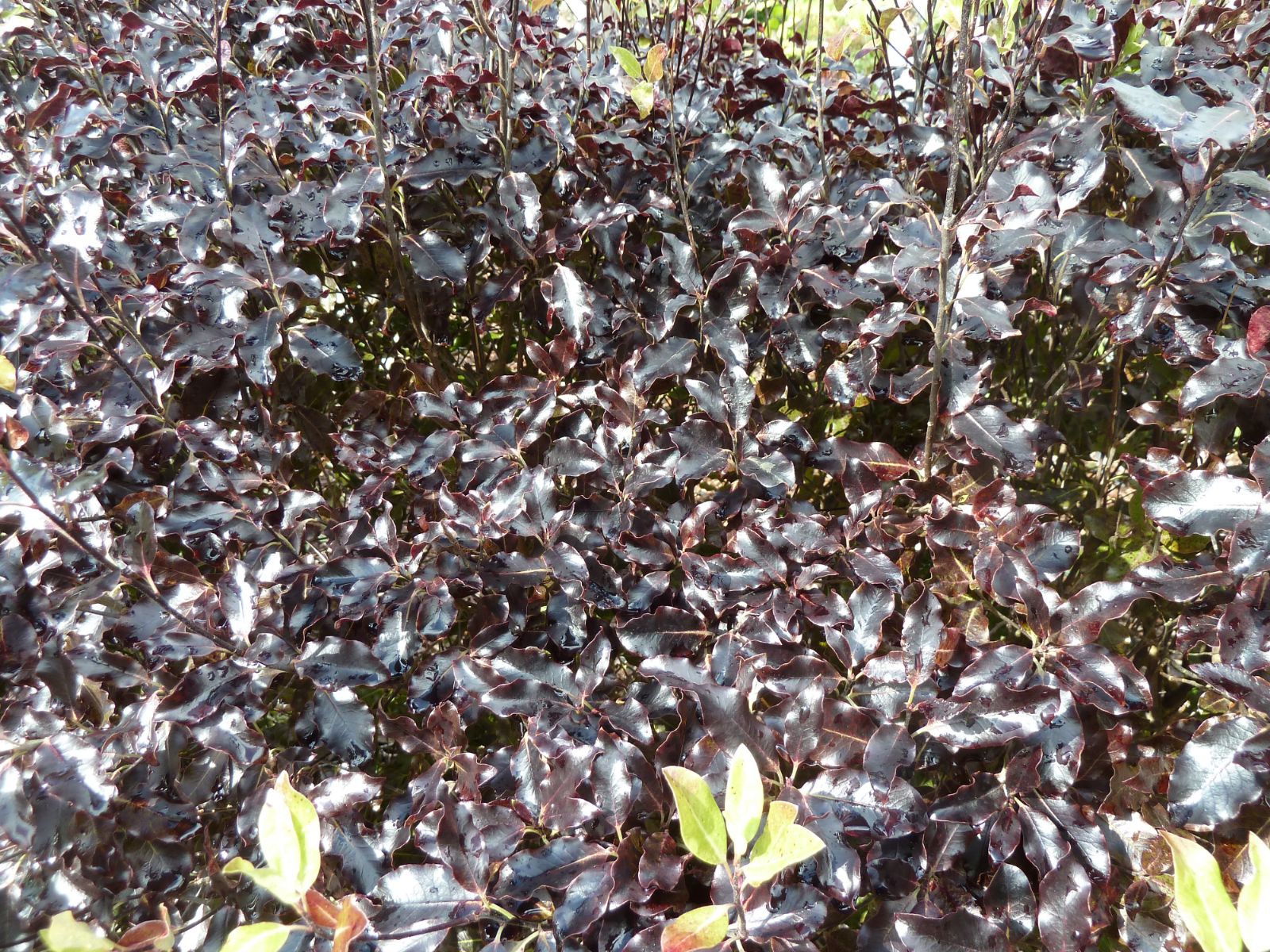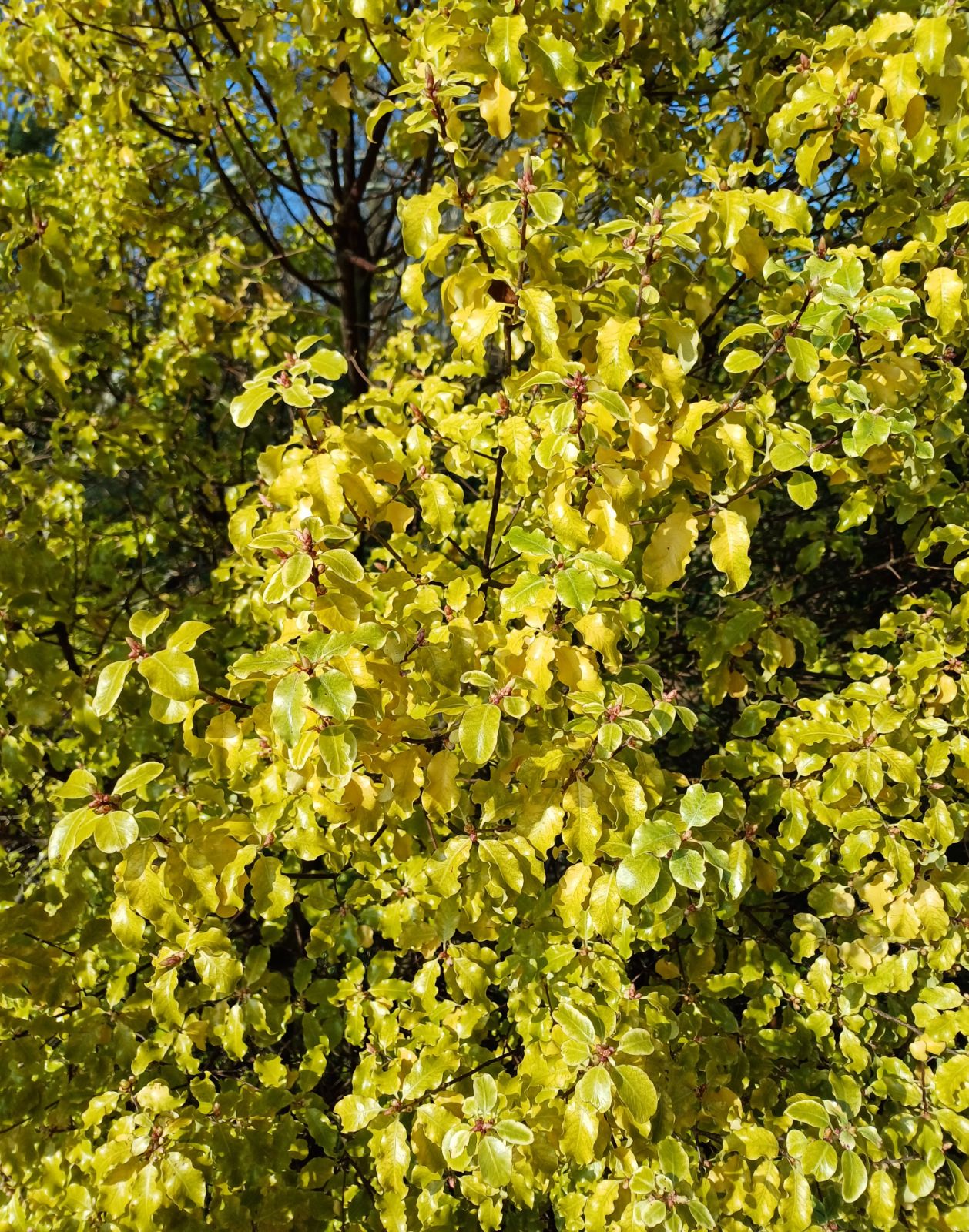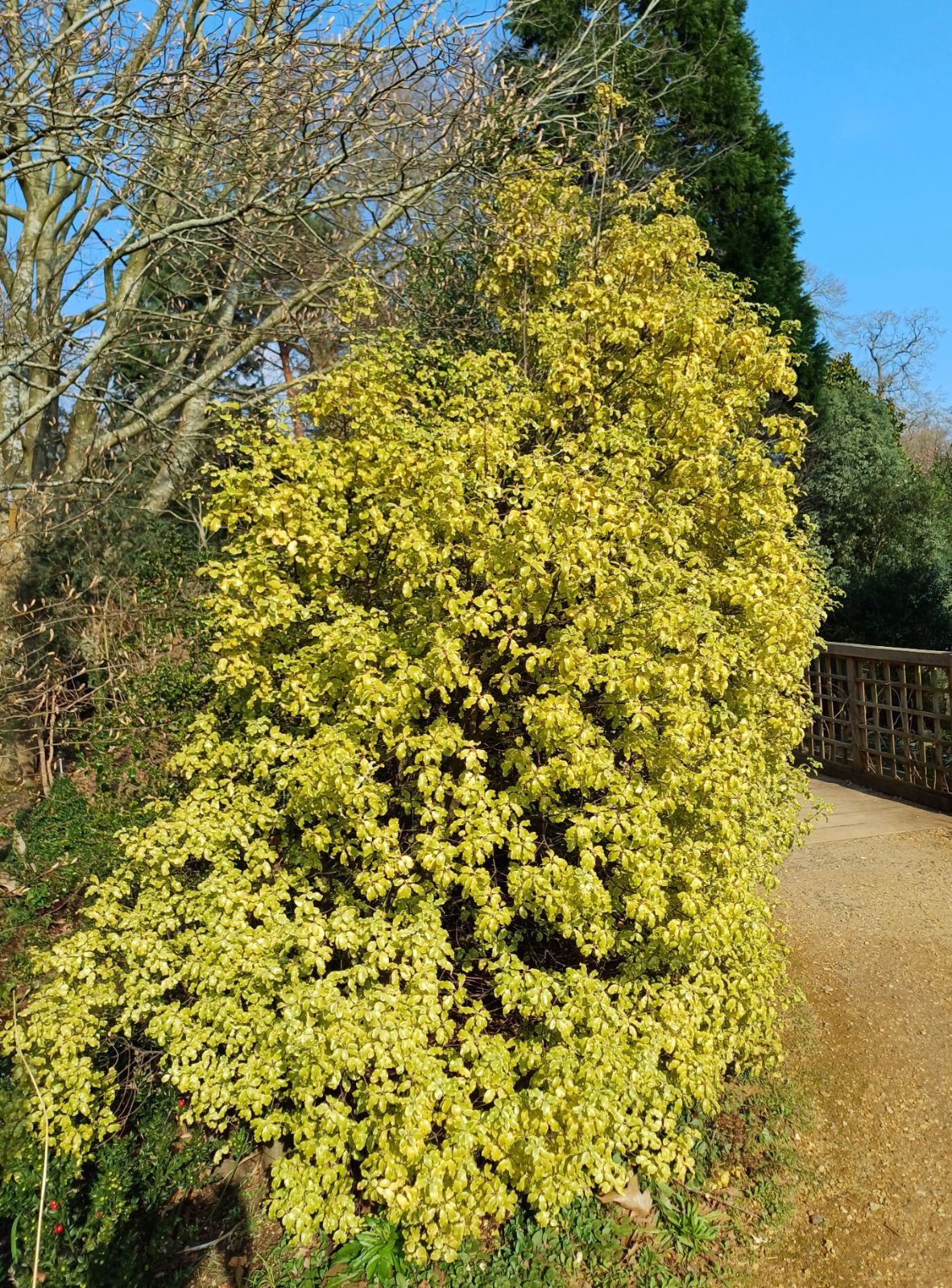Pittosporum tenuifolium
Credits
Article from Bean's Trees and Shrubs Hardy in the British Isles
Recommended citation
'Pittosporum tenuifolium' from the website Trees and Shrubs Online (treesandshrubsonline.
Infraspecifics
Other taxa in genus
- Pittosporum adaphniphylloides
- Pittosporum bicolor
- Pittosporum brevicalyx
- Pittosporum buchananii
- Pittosporum colensoi
- Pittosporum cornifolium
- Pittosporum crassifolium
- Pittosporum dallii
- Pittosporum daphniphylloides
- Pittosporum divaricatum
- Pittosporum eugenioides
- Pittosporum glabratum
- Pittosporum huttonianum
- Pittosporum patulum
- Pittosporum phillyreoides
- Pittosporum revolutum
- Pittosporum rigidum
- Pittosporum tobira
- Pittosporum undulatum
An evergreen tree up to 30 ft in height, with a slender trunk and dark coloured, almost black, young wood, and forming a dense mass of twiggy shoots. Leaves 1 to 21⁄2 in. long, oblong, obovate or elliptic, glabrous, of a pale shining green; the margins entire but wavy. The flowers come in the axils of the leaves, usually singly, but occasionally two or more together, and have dark chocolate-purple petals 1⁄4 to 1⁄2 in. long. The fruit is a capsule 1⁄2 in. in diameter, wrinkled when old, the valves thin.
Native of both the North and South Islands of New Zealand, reaching up to 3,000 ft altitude. Although it may be damaged or killed in severe winters, and be less hardy than such species as P. patulum and P. dallii, it seems to thrive better in our average climate than any other species so far introduced, as well as being the commonest. Even in eastern England it has attained 30 ft in sheltered places, and has produced self-sown seedlings in gardens as far east as Sussex. The flowers are borne very abundantly where it thrives, but are not conspicuous; their chief attraction is an exquisite honey-like fragrance, strongest in the evening, and then apparent yards away from the tree. The black young shoots and pale green leaves make a strong contrast. The cut foliage lasts long in water and is much used in floristry.
The following specimens have been recorded: Lanarth, Cornwall, 50 × 6 ft at 1 ft (1966); Tregrehan, Cornwall, 50 × 33⁄4 ft × 3 ft (1957); Newton Abbot, Devon, pl. 1885–90, 45 × 41⁄2 ft (E. Hyams, Journ. R.H.S., Vol. 91 (1966), p. 130); Lytchett Heath, Poole, Dorset, pl. 1889, 171⁄2 ft high and 30 ft in circumference of spread (Journ R.H.S., Vol. 56 (1931), p. 58); Abbotsbury, Dorset, 35 × 3 ft (1957); Powerscourt, Co. Wicklow, Eire, 35 × 61⁄4 ft (1966); Ashbourne House, Co. Cork, 33 × 43⁄4 ft at 3 ft (1966).
From the Supplement (Vol. V)
specimens: Abbotsbury, Dorset, 47 × 41⁄4 ft (1980); Culzean Castle, Ayrs., 46 × 6 ft at 3 ft (1984); Castle Kennedy, Wigt., 52 × 4 ft (1984); Powerscourt, Co. Wicklow, Eire, 43 × 43⁄4 ft (1980).
† cv. ‘Eila Keightley’. – Leaves with a central variegation of yellow and yellowish green; midrib and veins cream-coloured. Raised in a New Zealand nursery. It is offered by some nursuries under the later, illegitimate name ‘Sunburst’. (Metcalfe, Cult. N.Z. Tr. and Shr., p. 224).
† cv. ‘Irene Paterson’. – Ground-colour of leaves white, which becomes speckled with green and grey-green.
† cv. ‘Tom Thumb’. – Foliage similar in colour to that of ‘Purpureum’, but habit bushy and compact, to about 3 ft high. The same or similar clone has been named ‘Purpureum Nanum’.
'Garnettii'
See below.
'James Stirling'
Leaves roundish, smaller than average, being about {5/8} in. long, {1/2} in. wide. The original plant was found by Mr Stirling in the East Cape District (Gard. Chron., May 10, 1967, p. 15).P 'Garnettii'
Leaves with a margin of white which becomes tinted with pink in winter. They are elliptic, oblong-elliptic or rather broad oblong-elliptic, up to 2{1/4} in. long and 1{1/8} in. wide, slightly hairy beneath. Raised in New Zealand. It is usually treated as a cultivar of P. tenuifolium but may be a hybrid with P. ralphii as the other parent (Gard. Chron., June 15, 1966, p. 607).
'Purpureum'
Leaves purple and holding their colour through the winter.
'Silver Queen'
Leaves pale green with an irregular whitish margin. Raised by the Slieve Donard Nursery, Co. Down. A.M. 1914. There is an example at Caerhays, Cornwall, pl. 1915, measuring 43 × 33⁄4 ft at 31⁄2 ft (1966).'Warnham Gold'
Leaves golden yellow. Raised in the nursery of the Greater London Council at Warnham Court, Horsham, Sussex.


